6 Ways to Structure High-Performance Ad Campaigns for Better Results
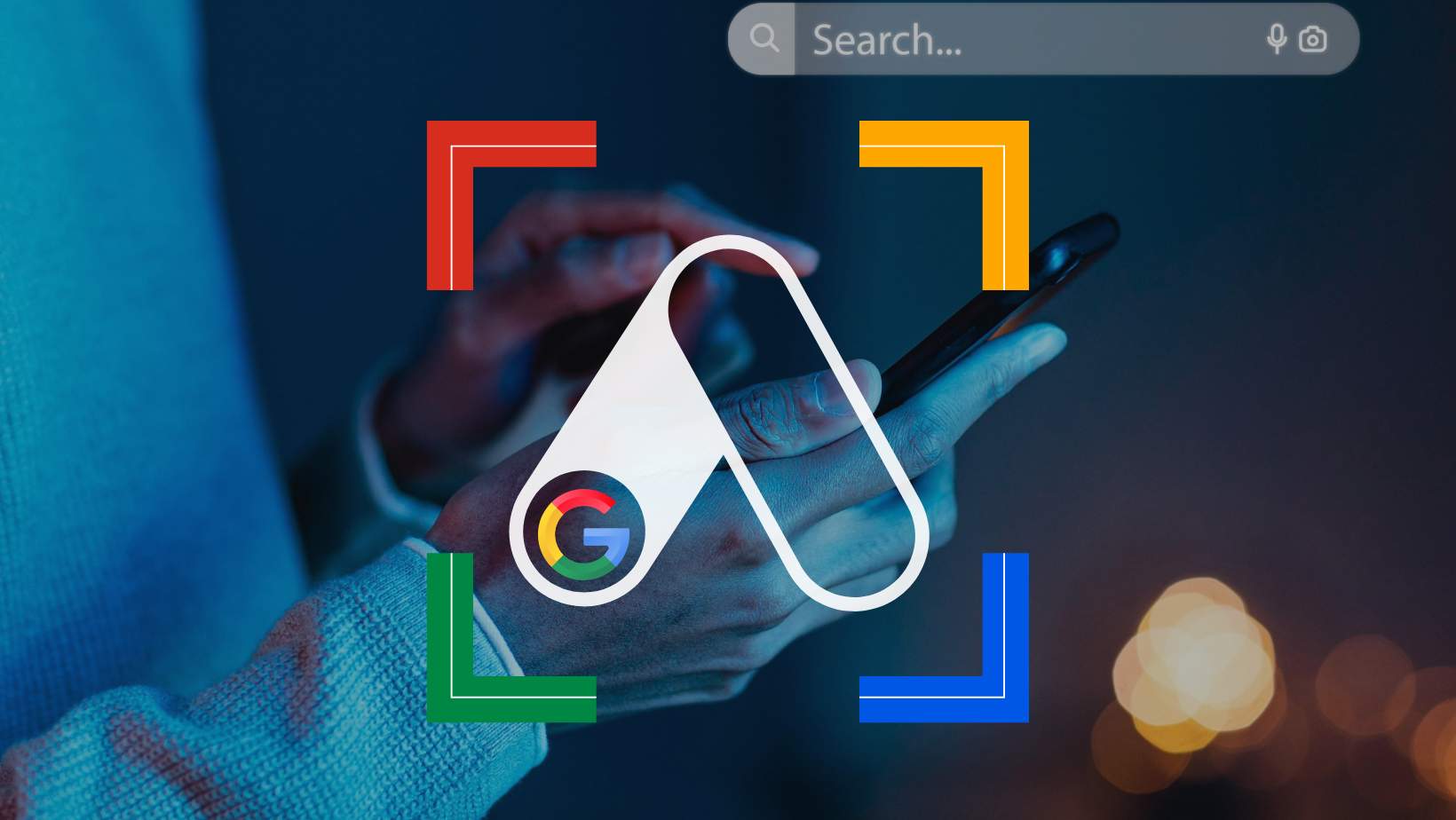
I open a potential client’s account for a quick health check.
At first glance, the numbers look solid. The search CPA is low, and conversions appear to be high.
Then I check the search terms.
Branded keywords are mixed into the general Search campaign, which hides the true performance of non-brand queries. The branded traffic is doing all the heavy lifting, making the campaign look stronger than it really is.
From there, it gets worse.
Broad match keywords are being used across most ad groups, but the conversion tracking is unreliable. One of the primary actions was based on page views and directions — low-value signals.
While another key primary action was still tied to Universal Analytics as the data source, which was retired back in July of 2023.
In other words, the algorithm is optimizing toward bad data. And without a strong negative keyword list, the budget is being spent on irrelevant searches instead of high-intent traffic.
The client is wondering why the leads aren’t coming in.
This isn’t unusual. Most campaigns that look healthy on the surface are missing the foundational elements that drive high-performance ad campaigns.
Why Campaign Structure Matters More Than You Think
Ad platforms don’t just look at your ads. They look at how your entire campaign is set up.
When the structure is clean, machine learning can optimize more effectively. It knows what your goal is, which signals to track, and how to allocate budget toward what’s working.
But when the structure is messy, everything gets slower and more expensive.
This is especially true in Google Ads, where structure directly influences how bidding, targeting, and automation perform.
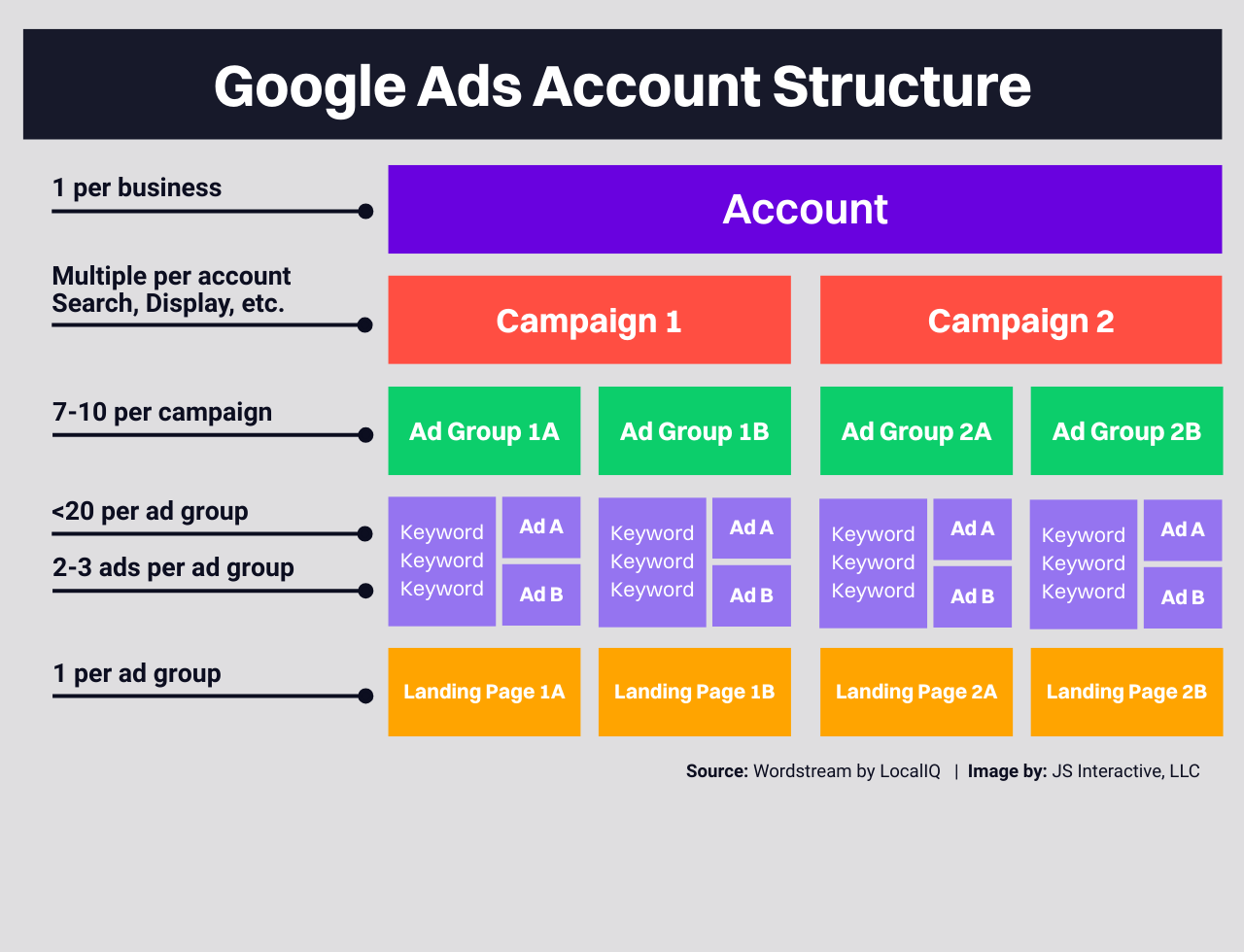
Sourced from WordStream
Poorly structured Google Ads campaigns often lead to:
- Blurred data between objectives, audiences, and keyword types
- Higher costs from inefficient bidding and irrelevant traffic
- Slower testing cycles and unclear insights
Most advertisers focus on the visible aspects, such as creative, copy, and landing pages, without realizing that structure is the engine behind it all.
Fix the structure, and everything else starts working better.
6 Building Blocks of Better-Performing Ad Campaigns
If your campaigns are underperforming, chances are the structure is getting in the way. The fixes below aren’t hacks or gimmicks. They’re foundational moves that consistently lead to better results across accounts.
1. Define a Clear Campaign Objective
Each campaign should have a single, clear goal.
Is that goal lead generation?
More sales?
Building brand awareness?
Pick one.
Mixing multiple goals in a single campaign can confuse the platform and muddy your performance data. Google Ads relies on clear objectives to optimize effectively. If you’re chasing leads and revenue in the same campaign, it doesn’t know which signals to prioritize.
Here’s how to keep your ad campaign clean:
- Use separate campaigns for each objective (e.g., one for leads, one for sales)
- Align your bidding strategy with the goal:
- Use Maximize Conversions for lead generation
- Use Maximize Conversion Value for revenue-focused campaigns
- Don’t switch goals mid-campaign. This only resets learning and kills momentum
The clearer your intent, the faster the system can adapt and improve.
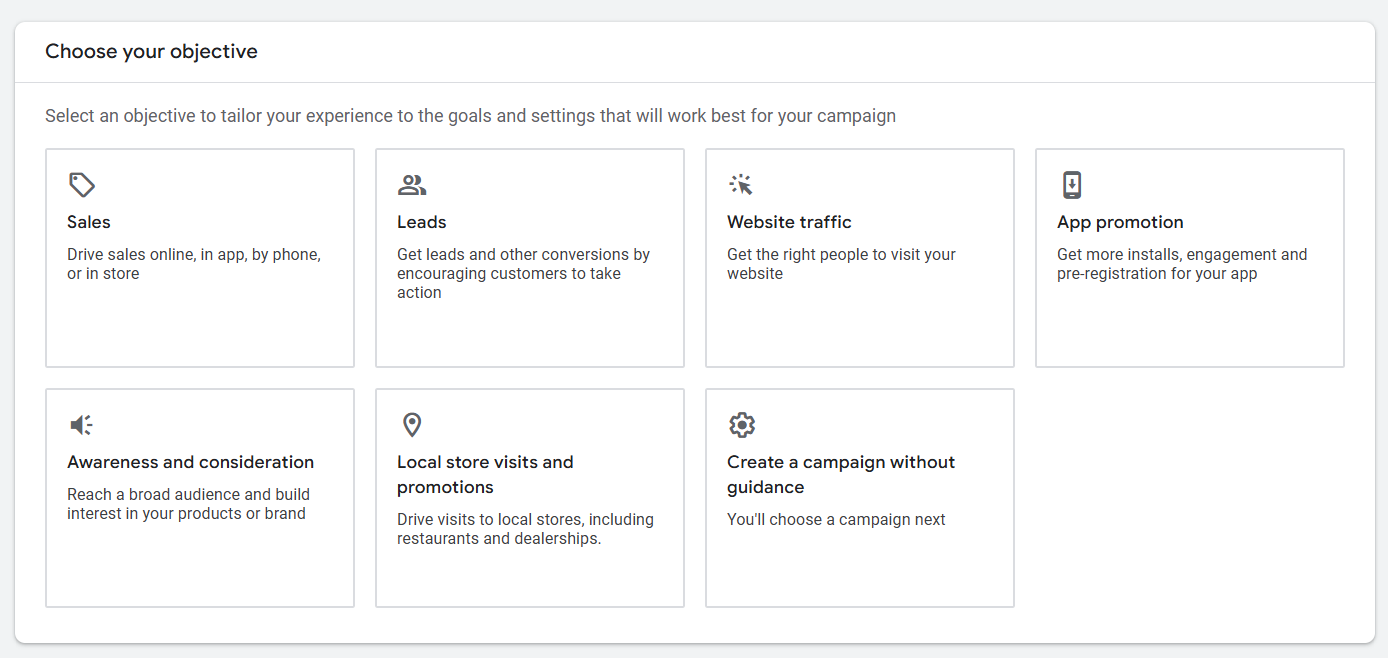
2. Build a Solid Keyword and Match Type Foundation
Your keywords control who sees your ads. If they’re too broad, you’ll waste budget on low-quality, irrelevant clicks. If they’re too narrow, you might miss valuable traffic.
To stay in control early on in the game, begin with exact match types. Once you have clean, consistent data, you should only then consider expanding with more intent-based variations.
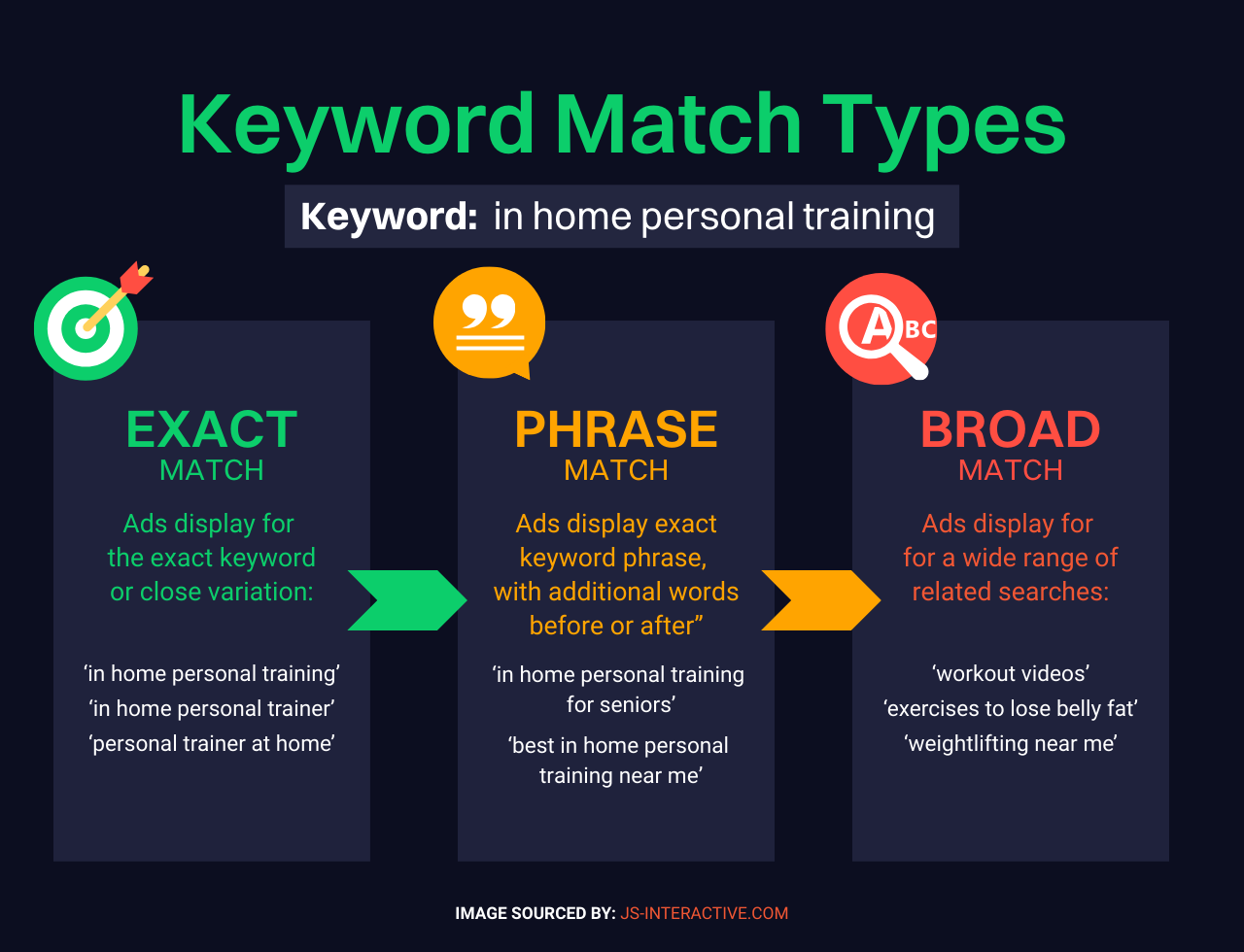
Here is an example. Suppose you’re a local fitness instructor. In that case, bidding on phrase match keywords like “certified fitness instructor” ensures you appear for relevant searches without showing up for unrelated terms like “health club staff”
Jumping into broad matches too early can derail performance. Google might show your ad to users searching for loosely related queries, like “Active Lifestyle and Wellness Services” or “How is the fitness and wellness industry changing?”
Neither of these will bring in the kind of traffic you’re looking for.
To keep your ad campaign targeting tight:
- Start with exact and phrase match to stay relevant and protect your budget
- Use broad match only after you have accurate conversion tracking and Smart Bidding in place, with a solid negative keyword list.
- Create and maintain an account-wide negative keyword list to block terms that waste spend (e.g., “free,” “DIY workouts,” “fitness instructor jobs,” “online fitness instructor course,” or competitors’ names if you don’t want to bid on them).
This foundation enables Google Ads to learn more quickly and provides you with actionable insights with data.
3. Write Highly Relevant Ad Copy
Your ad copy is where targeting meets user intent. If it doesn’t reflect what someone just searched for, they’re far less likely to click or convert.
Start with the basics: make sure your headlines include the keywords you’re bidding on.
If someone searches for “ecommerce SEO consultant,” and your headline says “Top Ecommerce SEO Consultant,” you’re instantly more relevant than a generic “Grow Your Online Business” ad.
It’s not just about relevance. It’s about performance. Including the keyword in your ad helps improve your Quality Score, which directly affects your cost per click and ad rank.
To increase relevance even further:
- Reference your audience directly in the copy. Speak to their goals or pain points. For example: “Ready to lift ROAS? Get a performance-first ad strategy.”
- Use location dynamically for local campaigns. Features like Dynamic Keyword Insertion (DKI) can automatically insert a city name into your headline (for example, “Fitness Instructor in Austin” instead of a generic “Best Gym”), offering hyper-local relevance to viewers.
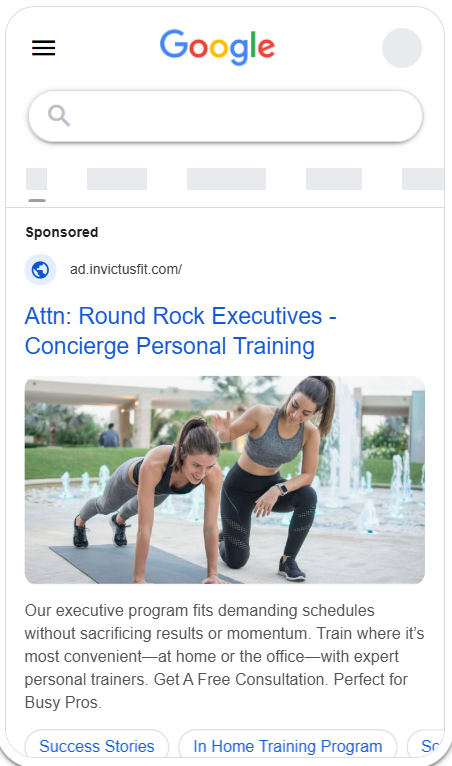
The Invictus Fitness ad for “Round Rock Executives – Concierge Personal Training” is a strong example of how to connect targeting with user intent.
It targets a specific audience (executives) directly in the headline, incorporates the location for hyper-local relevance, and uses a high-energy image of a personal training session to capture attention.
The copy highlights convenience by offering sessions “at home or the office,” making the ad feel personal, targeted, and highly clickable.
That level of precision is only effective when it feels natural. Avoid stuffing keywords into your ad just for the sake of it. Readers can spot forced language instantly.
The best-performing ads flow smoothly, match the searcher’s intent, and make the offer feel relevant.
In the end, strong copy doesn’t just attract clicks, it attracts the right clicks.
4. Implement Consistent Naming Conventions
You can have a great strategy and firm performance, but if your campaign names are a mess, good luck making sense of the data.
Clear naming conventions make it easier to manage your account, especially as it grows. They help with reporting, optimization, and audits without requiring you to dig through each campaign or ad group to figure out what each one contains..
A strong naming structure should tell you, at a glance:
- The campaign type
- The objective (lead gen, sales, retargeting, etc.)
- The bidding strategy
- The audience or location
- The channel or network (if applicable)
For Invictus Fitness, this could look like:
- Search_LeadGen_tCPA_Invictus_RoundRock
- Performance_Max_RoundRock_Invictus_tROAS_875%
That’s much easier to work with than “Campaign 3” or “New Ad Test.”
This kind of structure saves time, reduces errors, and helps everyone on the team stay aligned. It also makes it much easier to scale.
Treat naming like infrastructure. You won’t notice it when it’s done well, but you’ll feel it when it’s not.
5. Scale Strategically with Campaign Types
Not every campaign type is suitable at every stage of the process. Campaign types have different jobs and data needs. Scale comes from sequencing them, not switching everything on at once.
For businesses looking to generate leads, start with non-brand Search campaigns.
They deliver cleaner, intent-driven data. You can test your targeting, messaging, and bidding with direct query feedback in a relatively controlled environment.
Once your Search campaigns are performing reliably, you can layer in Performance Max. It’s a broader, more automated campaign type that pulls data from multiple networks, including Search, Display, and YouTube. But it needs solid conversion data to be effective.
For e-commerce businesses, pair Search with Performance Max Shopping early to capture product intent, then expand once tracking is solid.
Think of it like this:
- Non-brand Search campaigns help you learn and capture demand with higher-signal query data
- E-commerce: Shopping/Performance Max enables you to scale what’s already working once feed quality and tracking are solid
- Lead Gen: Add Performance Max only after conversion quality is reliable.
Don’t rely on Performance Max to fix poor targeting or unclear offers.
If you launch it too early, the automation can attract low-quality traffic that depletes your budget without enhancing performance.
Scale isn’t just about spending more. It’s about knowing what to expand and when.
6. Separate the Brand Name with a Brand Search Campaign
Branded searches behave differently from non-branded ones. When someone searches for your company name or product directly, they’re already familiar with you. These users are typically lower in the funnel (your warmest audience) and much more likely to convert.
Mixing branded and non-branded keywords in the same campaign creates problems:
- It skews performance data, making non-brand results look better than they really are
- It confuses bidding algorithms that are trying to optimize across very different levels of intent
- It makes it harder to measure what’s actually driving new traffic versus return visits
Keep things clean by creating a separate Brand Search campaign. This gives you more control over the message users see when they search for your name and lets you protect those high-intent clicks from competitors.
Even if you’re ranking organically, don’t assume that’s enough. Competitors often bid on brand names, and paid ads can still outrank your organic listing. We can see this in our example with FreshBooks, below.
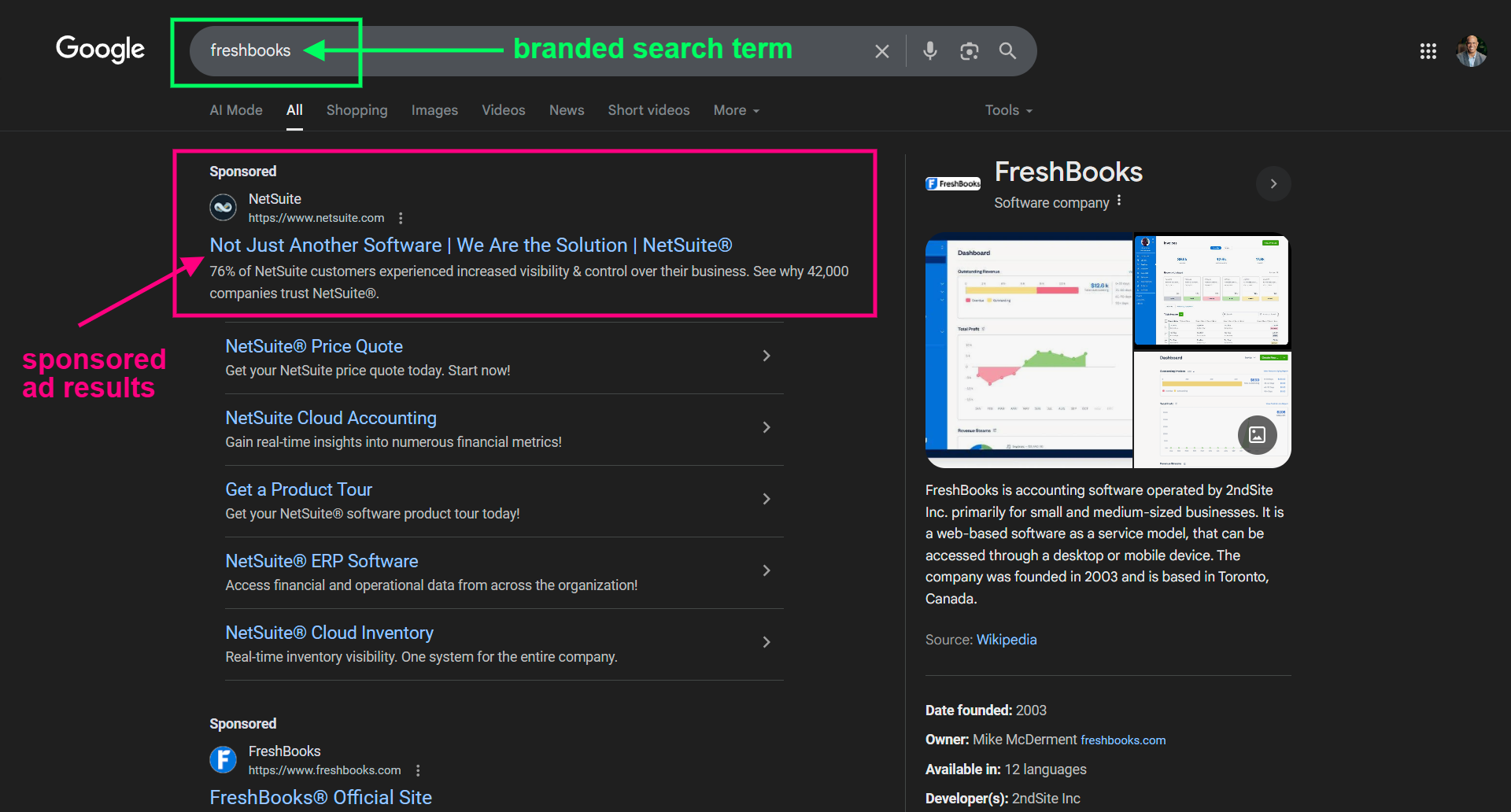
Defending your brand with a dedicated campaign is one of the easiest, highest-ROI moves you can make.
Let JS Interactive Help You Build Campaigns That Perform
Your Digital Ad Campaigns don’t need more complexity. You need a cleaner setup that drives results.
At JS Interactive, we help businesses simplify and optimize their ad campaigns, making performance measurable, scalable, and profitable.
Whether you’re building from scratch or trying to fix a bloated, underperforming account, we’ll help you cut through the noise and focus on what works.
Want to know where your campaign structure is holding you back?
Let’s take a look. Book a 15-minute free consultation.